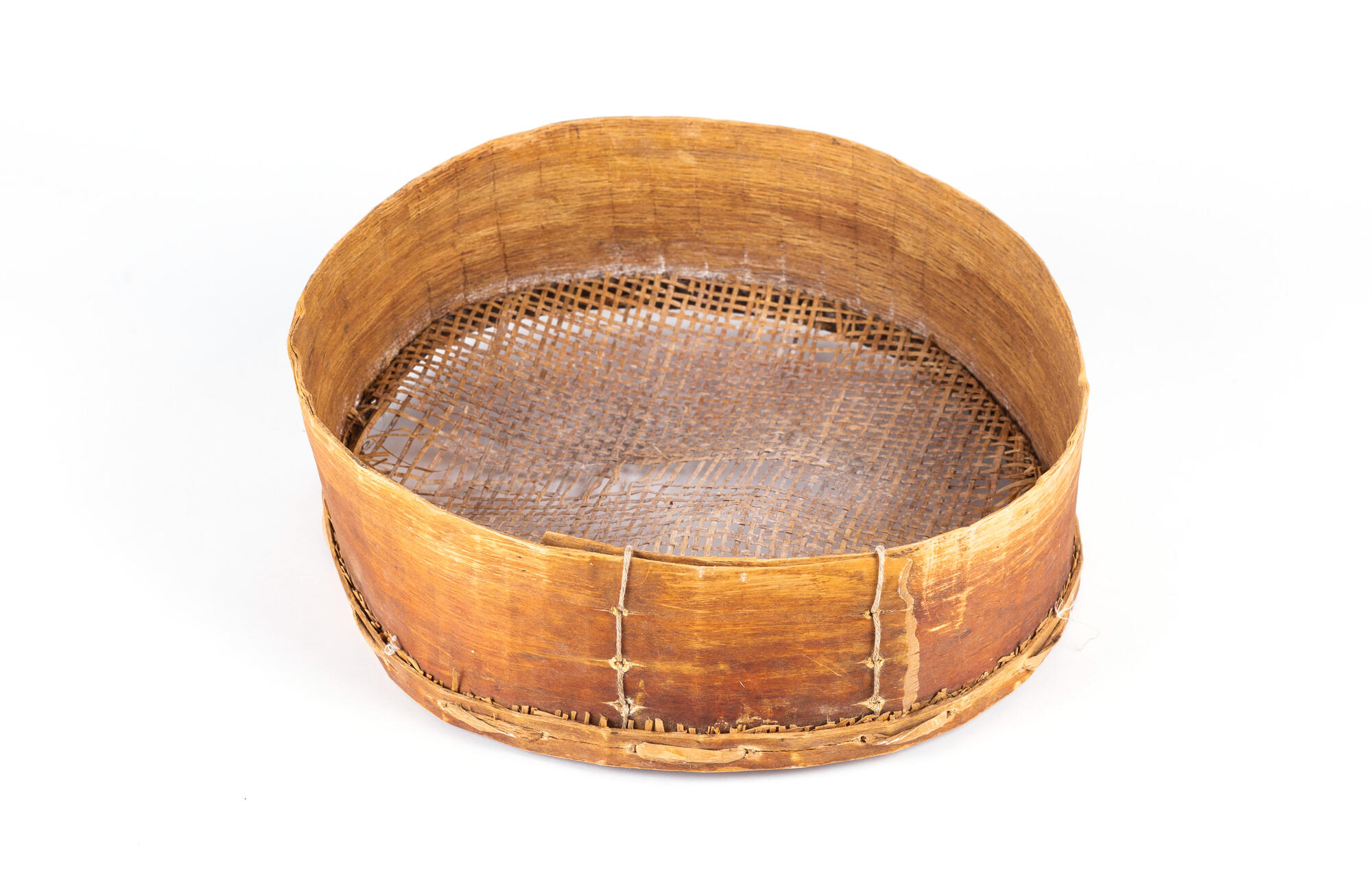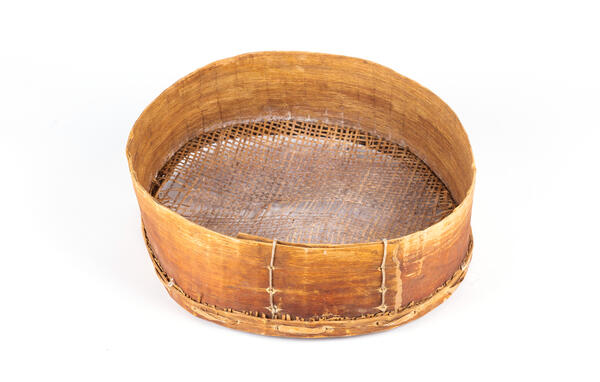The sifter is a device used to sift flour that consists of a wide hoop and a mesh stretched over it on one side. The museum’s exposition has a wooden sifter created in the XX century. Most likely, it was a product of cottage industry.
A sifter, unlike a sieve, has a large volume, and the mesh cells are farther apart. Coarser flour was usually sifted using a sifter, while finer flour was sifted through a sieve. Bread made of flour sifted through a sifter was called “sifted bread”, and if it was sifted through a sieve then it was called “sieved bread”. The name of the sifter originates from the Old Russian word “re”, which means “hole”. Not only is flour is sifted using a sifter, but so are other bulk substances. The sifter is also used to filter liquids, and even strain some products, such as boiled peas. In the past, the sifter was also used to store food, so it was sometimes used to measure food as well.
The sifter was often used in pagan rituals as a receptacle for gifts, in folk medicine it played the role of a talisman, and in fortune telling it acted as an oracle. Water poured through a sieve could be endowed with healing properties during pagan practices. This water was used to wash children and domestic animals for medicinal purposes, and also it was used to perform magic rituals designed to have a beneficial effect on wealth and fertility.
A large sifter with high side walls and a basket with a thin bottom for sifting were called a filter pan. Filter pans could be used as a cooking utensil, but more frequently they were used as an auxiliary tool in construction. In antiquity and after that, filter pans were common in the northern regions.
Most often, sifters were crafted from wood. On the whole, among the Russian peasantry wooden utensils predominated among household utensils. When making these utensils, both wood and ancillary wood products were used: bark, bast, and birch bark were widely used. The sifter has always been classified as particularly crucial kitchen items, since it was used to sift flour, which means that they were used to make the main product in Russian cuisine: bread.
A sifter, unlike a sieve, has a large volume, and the mesh cells are farther apart. Coarser flour was usually sifted using a sifter, while finer flour was sifted through a sieve. Bread made of flour sifted through a sifter was called “sifted bread”, and if it was sifted through a sieve then it was called “sieved bread”. The name of the sifter originates from the Old Russian word “re”, which means “hole”. Not only is flour is sifted using a sifter, but so are other bulk substances. The sifter is also used to filter liquids, and even strain some products, such as boiled peas. In the past, the sifter was also used to store food, so it was sometimes used to measure food as well.
The sifter was often used in pagan rituals as a receptacle for gifts, in folk medicine it played the role of a talisman, and in fortune telling it acted as an oracle. Water poured through a sieve could be endowed with healing properties during pagan practices. This water was used to wash children and domestic animals for medicinal purposes, and also it was used to perform magic rituals designed to have a beneficial effect on wealth and fertility.
A large sifter with high side walls and a basket with a thin bottom for sifting were called a filter pan. Filter pans could be used as a cooking utensil, but more frequently they were used as an auxiliary tool in construction. In antiquity and after that, filter pans were common in the northern regions.
Most often, sifters were crafted from wood. On the whole, among the Russian peasantry wooden utensils predominated among household utensils. When making these utensils, both wood and ancillary wood products were used: bark, bast, and birch bark were widely used. The sifter has always been classified as particularly crucial kitchen items, since it was used to sift flour, which means that they were used to make the main product in Russian cuisine: bread.



